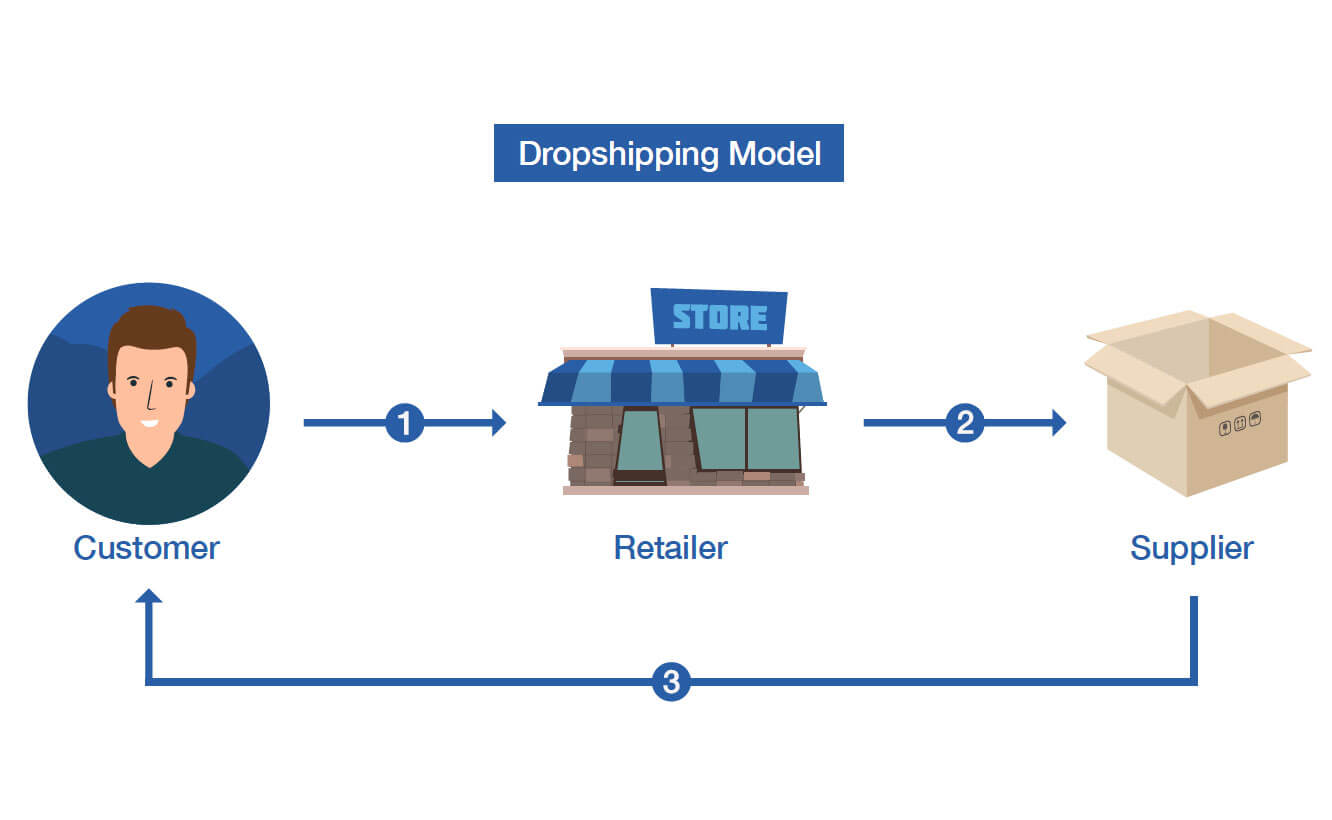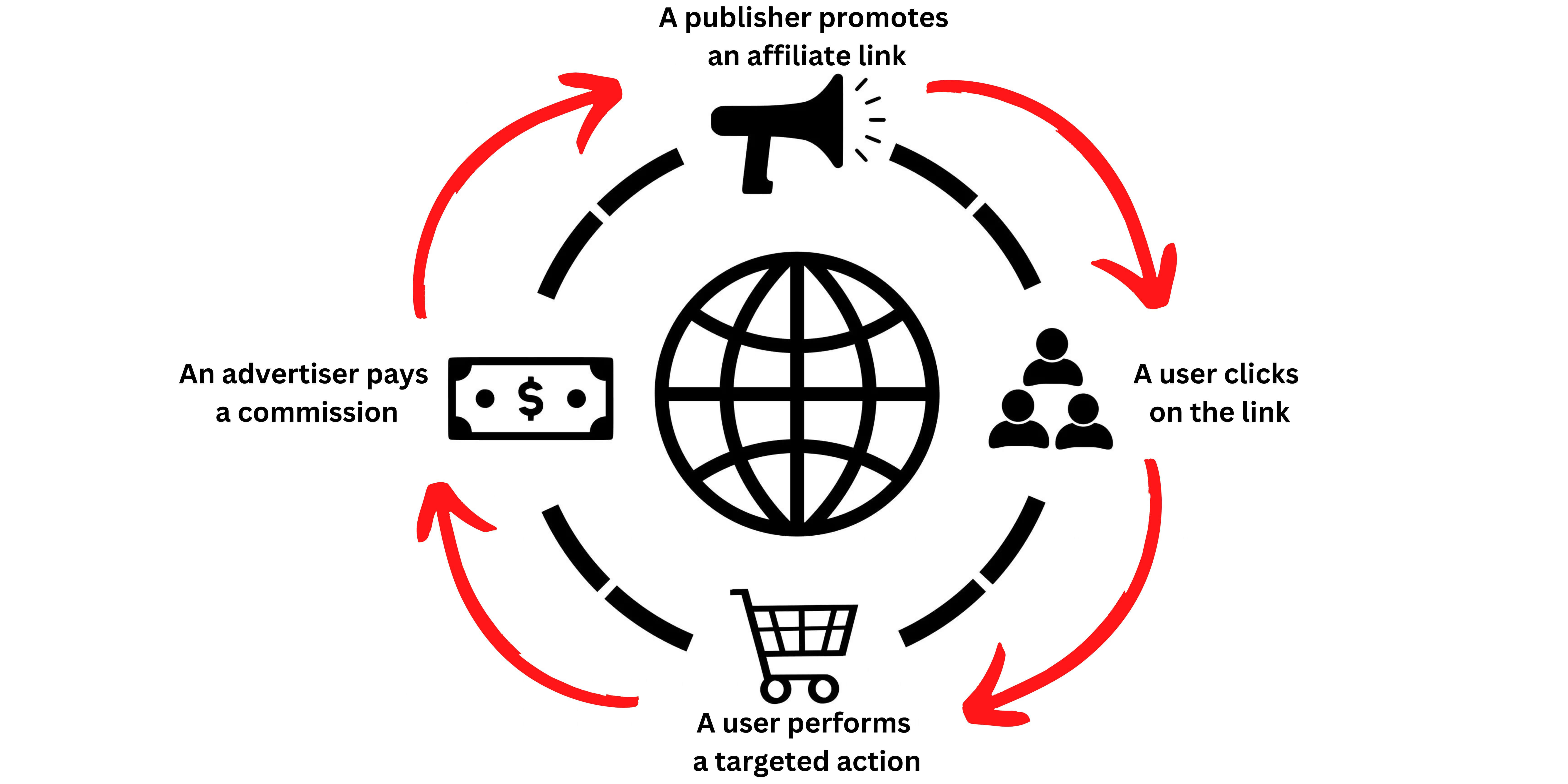Dropshipping vs Affiliate Marketing: Which One To Choose in 2023?

Online business is not just another opportunity to make money, it’s a real chance to stay afloat in difficult times and gain access to an audience of millions. In the world of ecommerce, two popular business models are Dropshipping and Affiliate Marketing. Both offer the opportunity to make money online, but the methods and profitability of each are quite different. Today we will unveil all the differences and nuances only the people who did both know. Keep reading!
What is dropshipping
Dropshipping is a business model in which an online retailer does not keep physical products in stock but instead takes orders from customers and transfers them to a third-party supplier or manufacturer, who ships the products directly to the customer. So, when a customer places an order on the retailer’s (also called dropshipper) website, it purchases the item from a third party and has it shipped directly to the customer. This eliminates the need for the retailer to hold inventory and handle the shipping process, making it easier for businesses to start and scale.
The dropshipper becomes an intermediary between suppliers and end buyers. A dropshipper’s earnings are earnings on commissions from sales, and the prices of goods in his online store are already listed with a commission.
Here’s how it works:

When a customer places an order from a dropshipping store, the process works like this:
- The customer visits the online store and browses the products.
- They select the product they want to purchase and add it to their cart.
- The customer completes the checkout process and pays for the product.
- The dropshipper receives the order and payment information, including the customer’s shipping address.
- The dropshipper forwards the order to their supplier or manufacturer, who packages and ships the product directly to the customer.
- The customer receives the product in the mail with any branding or packaging from the supplier, but without any indication of the dropshipping arrangement between the store and supplier.
How are payments processed in dropshipping?
Dropshipping payment processes can vary depending on the specific business and the agreements made between the dropshipper and their suppliers. In general, there are a few common payment methods that may be used in dropshipping:
- Payment right after the order is placed: once the order is placed, the retailer then sends an invoice to the supplier.
- Payment on delivery: with this method, the retailer only pays the supplier after the product has been delivered to the customer.
- Upfront payment: With this method, the dropshipper pays the supplier upfront for the products they plan to sell. The supplier then ships the products directly to the retailer’s customers.
- Payment on credit: Some suppliers may offer credit terms to retailers they have established relationships with. This means the retailer can order products without paying upfront, and then pay for them later, usually within a certain period of time (such as 30 days).
Ultimately, the payment process in dropshipping will depend on the specific business and the agreements made between the retailer and their suppliers. It’s important for retailers to carefully consider the payment terms they agree to, as they can have a significant impact on the profitability and cash flow of the business.
Pros of dropshipping
There are several potential advantages of dropshipping for entrepreneurs:
- Low startup costs: one of the most significant advantages of dropshipping is that it allows entrepreneurs to start a business with relatively low startup costs. Because they don’t have to purchase inventory upfront or invest in a warehouse, they can focus on building their website and marketing their products.
- Minimal inventory management: with dropshipping, entrepreneurs don’t have to worry about managing inventory or dealing with warehouse logistics. This means they can focus on other aspects of their business, such as customer service and marketing.
- Flexible location: as dropshipping is an online business, entrepreneurs can work from anywhere they have an internet connection. This can be particularly appealing for people who want to travel or work from home.
- Wide product selection: as they don’t have to worry about storing inventory, dropshippers can offer a wide range of products without having to invest in stock.
- Low risk: with dropshipping, entrepreneurs don’t have to worry about investing a lot of money upfront in inventory or warehouse space. This can make it a low-risk way to test out new product ideas or business models.
- Scalability: as dropshippers don’t have to worry about managing inventory or warehousing logistics, they can easily scale their business up or down as needed.
Cons of dropshipping
In practice, many of the advantages of dropshipping are not quite feasible or no longer feasible due to the high competition and the huge number of online stores.
- Pricing: dropshipping profits are made up of price differences and therefore directly depend on the price at which the supplier will sell you the goods. If the supplier’s price is high, then adding his commission to that, the dropshipper will get uncompetitive prices against other online stores with lower prices. Also, many suppliers force dropshippers to stick to the RRP (recommended retail price), which can affect your profits as a dropshipper.
- Payment for merchandise: most suppliers only work on prepayment. Prepayment is usually made by the customer when placing an order at an online store, but not all customers are prepared to do this, especially if the product is not from a low-end segment and there are no reviews about your online store yet. In this case you will have to repurchase the product for your own money, because there is always a risk that the customer will cancel the order.
- Changes in orders and returns: changes in the order, which the buyer may ask for after the order has been placed, must be notified to the supplier, and of course it takes time, which may affect the delivery time. Some suppliers have a negative attitude towards such changes, and you should agree in advance on a course of action in case of such situations. Keep in mind that returning goods can turn into a real pain, because not all suppliers accept returns, and this, too, must be agreed upon in advance.
- Customer Support: dropshipper is not involved in assembling and delivering goods to buyers, and therefore cannot influence the whole process in any way. This means that in case of errors in assembling orders and delays in delivery, all the lumps will fall on the online store, which will have to provide customer support and whose image will invariably suffer in case of any problems with orders. Until now, many suppliers’ stock reconciliation is not done automatically, but over the phone, which means that the probability that the ordered product will be out of stock increases several times. In addition, some suppliers charge extra for packaging or order processing.
- Logistics: a supplier may have a paid delivery to the transportation company, or he does not organize delivery to the transportation company at all, and you have to call the courier yourself. This again will affect the cost of goods or the cost of delivery in your online store, making it even less competitive. Some dropshippers depart from the classic dropshipping model and take over the logistics completely: they pick up the goods from the supplier and pass them on to the customers.
- Advertising: often suppliers put leaflets and other information in parcels with the contact details of the supplier rather than the dropshipper, although this contradicts the principles of the dropshipping model. It is difficult to control such dishonest advertising, and it is necessary to test work with a particular supplier in advance to be sure of his integrity. Sometimes this happens without any malicious intent, simply because order pickers are not attentive enough and automatically put the same flyers in all orders, regardless of whether they are made directly from the supplier or through intermediaries.
- Competition: most suppliers already trade on marketplaces, which are actually dropshippers: they sell products they don’t have. At the same time, many have their own online stores. In such conditions it is difficult for dropshippers to compete: marketplaces often lower prices, manufacturers constantly hold promotions on their own sites. Given that suppliers are actively promoting their products in social networks, there is less and less interest in dropshippers, and as a consequence, less and less favorable conditions they are willing to provide to intermediaries.
What is affiliate marketing
Affiliate marketing is a marketing strategy where a business rewards one or more affiliates for each customer or sale that is generated through their marketing efforts. Essentially, affiliates promote the business’s products or services through various channels (such as websites, social media, or email), and they earn a commission for each sale or conversion that they generate.
The process typically works as follows:

1. A business creates an affiliate program and provides affiliates with a unique link or code to promote their products or services.
2. Affiliates use the link or code to promote the business’s products or services through various channels, such as social media, blogs, or email.
3. When a customer clicks on the affiliate’s link and makes a purchase, the affiliate earns a commission based on the sale.
The commission structure and payment terms can vary depending on the business and the affiliate program. Some programs pay affiliates a percentage of the sale price, while others pay a flat fee per sale. Payments may be made on a monthly, bi-weekly, or weekly basis.
Affiliate marketing can be a cost-effective way for businesses to reach new customers and increase sales. It can also be a way for affiliates to earn passive income by promoting products or services that align with their interests and audience.
Pros of affiliate marketing
- Low start-up costs: affiliate marketing typically has low start-up costs because affiliates don’t need to create their own products or services. They can promote existing products or services, which can save them time and money.
- Passive income: affiliate marketing can be a way to earn passive income by promoting products or services that align with their interests and audience. Once an affiliate has set up their marketing strategy, they can continue to earn commissions on sales without actively promoting the products or services.
- Flexibility: affiliates can promote products or services from anywhere with an internet connection, and they can do so on their own schedule. This can be particularly appealing for people who want to work from home or travel.
- No need for customer support: affiliates are responsible for promoting the products or services, but they don’t have to deal with customer support issues. This means that they can focus on promoting the products or services without worrying about providing customer support.
- No need to create products: affiliates don’t need to create their own products or services, which can be time-consuming and costly. They can focus on promoting existing products or services, which can save them time and money.
- High commission rates: as affiliates are responsible for generating sales, they can earn high commission rates. This can be a way to earn more money than with other types of marketing.
Cons of affiliate marketing
- Reliance on the success of the product or service: as an affiliate, your earnings are dependent on the success of the product or service that you are promoting. If the product or service doesn’t sell well or doesn’t meet the needs of your audience, your earnings will suffer.
- Limited control over the product or service: as an affiliate, you don’t have control over the product or service that you are promoting. This means that you can’t make changes or improvements to the product or service to better suit the needs of your audience.
- Competition from other affiliates: as affiliate marketing is a popular strategy, there may be many other affiliates promoting the same product or service. This can make it more difficult to stand out and generate sales.
- Risk of non-payment: there is a risk that the business may not pay you the commissions that you have earned. This can happen if the business goes bankrupt or if they dispute the validity of the sales that you have generated.
- Legal requirements: as an affiliate, you may be required to comply with certain legal requirements, such as disclosing that you are being paid to promote the product or service.
- Constant need for promotion: affiliate marketing requires ongoing promotion to generate sales and commissions. This can be time-consuming and may require a significant investment of time and effort.
Affiliate marketing vs. Dropshipping: Ultimate Comparison Table
| Affiliate marketing
| Dropshipping
| |
| Startup costs | Website builder (if you’re not a programmer), hosting services | Website builder (if you’re not a programmer), hosting services |
| Risks involved | No risks, except for overspending ad budget (in case you start with traffic arbitrage) | If the upfront payment is used, a retailer has to pay for products in advance. Also, sometimes returns are also proceeded at retailer’s expense. |
| Ad budget | Optional, depends on if you want to get involved in traffic arbitrage. If you have an active audience, you might feel enough with what you make on it. | Ad budget is required, because your online store operates as every other ecommerce store: if no one knows about it – you earn nothing. |
| Customer support | Customer support as well as other operations are on advertiser’s side | Retailers aren’t responsible for customer support. |
| Returns and order changes | Affiliate isn’t responsible for that, it’s on advertiser’s side | Dropshippers have to deal with both returns and order changes |
| Shipping costs | Affiliate isn’t responsible for that, it’s on advertiser’s side | Usually, the supplier will invoice you for all shipping costs relevant to your business. In case of shipping fees for returned products, various suppliers have varied regulations about who pays for shipping charges. If the item is broken or faulty, it is the supplier’s responsibility. |
| Payments | Affiliates don’t pay anything to an advertiser, as joining affiliate programs is free of charge. Affiliates get paid from an advertiser after a hold period during which an advertiser checks the quality of the generated traffic. | Dropshippers might have to pay in advance for the products they plan to sell later. Dropshippers are paid the difference between customer price and wholesale price. Usually a dropshipper receives the payments from the customer and pays the wholesale price to the supplier. |
| Competition | High | High |
| Reputation loss due to reasons beyond our control | Affiliate’s reputation might suffer, but usually not to a big extent, as users realize this isn’t the affiliate’s fault. | Your business reputation will suffer after every mistake of your supplier, as usually users don’t even know that you’re an intermediary. |
Which one is easier for a beginner: Dropshipping or Affiliate marketing?
In comparison with Dropshipping, Affiliate marketing is easier and less risky to start and manage. Dropshipping requires you to manage a store, keep in touch with a supplier, provide quick customer support and launch marketing campaigns to attract new customers. Sometimes you will even need to pay for products in advance, since suppliers usually don’t trust dropshippers-newbies. This takes time and money.
Affiliate marketing is much easier to handle: you create content at your own pace, you write about what you like and you don’t have to worry about products or customer service. You just get a commission by letting people buy through your link. That’s it.
Which one is more profitable: Dropshipping or Affiliate marketing?

Both dropshipping and affiliate marketing can make you good profits. Of course, if you’re highly interested in ecommerce operations, dropshipping might be a better fit for you, but again, only if you enjoy the store management. Theoretically, when it comes to a profit, with dropshipping you can earn more money than with an affiliate marketing business. This is because you can decide the profit margins, making it possible to have high-profit margins of more than 30%.
In practice, however, it’s extremely hard to compete with big online stores and marketplaces and even if the dropshipper is lucky enough to get an order, they can just hope that the supplier will ship the item to the customer and that the order will be the right one. If the item isn’t received by the customer or the item is wrong or damaged the dropshipper has to refund the money and accept the return. Theoretically, in case of any fault on the supplier’s side, they should shell out refund money, but in practice, again, it might not happen, so the dropshipper has to deal with the broken item by discarding it or trying to resell it, which means losing money.
Affiliate marketing doesn’t inflict any economic losses, of course if you don’t decide to jump into traffic arbitrage with huge budgets without having any previous experience in it. It’s a more smooth way to build your income stream while growing your audience and creating valuable content. You might not become a millionaire overnight, but it won’t happen with dropshipping either. However, with affiliate marketing you’re flexible with the products and services you offer to your audience as well as with your time – you don’t do customer service, you don’t have to cover up other companies’ mistakes, that’s important, don’t underestimate this.
—
Takeaway
Overall, both dropshipping and affiliate marketing are very much alive these days and can be very profitable if used wisely. However, affiliate marketing can be an appealing option for affiliates who want to earn passive income by promoting products or services that align with their interests and audience. It can be a low-risk and cost-effective way to start an online business, and it can offer flexibility and high commission rates. While it does come with some challenges, such as finding the right products or services to promote and building a successful marketing strategy, it can be a way to earn money without having to create products or provide customer support.
And you can surely promote affiliate programs of some major suppliers, take a look at these offers:
Type: CPS
Payout: up to 9%
Type: CPS
Payout: up to 15%
Type: CPS
Payout: up to 12%
If you’ve set your mind towards affiliate marketing, here at Indoleads you can find 2000+ affiliate programs in all profitable niches and dedicated affiliate managers for every single publisher!